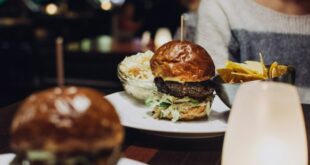Utsumi Shoki and his wife Nguyen Trang Dung began to grow 15 kinds of herbs in Osaka, Japan, after discovering how important they were to Vietnamese students and expats.
The Japanese chef got this idea when he first saw Vietnamese trainees riding their bicycles dozens of kilometers to buy Vietnamese food in the city of Tondabayashi in Osaka Prefecture.
“They had to go to Vietnamese convenience stores to buy spices and herbs,” he says.
He started selling some of them himself, but then began to worry about the freshness and possible pesticides in the herbs he was selling since he had to buy them from others.
So he decided to borrow land from his grandfather and applied for permissions to grow herbs there.
 |
|
Vietnamese balm patches and packages for sale made by Utsumi and Dung. Photo from Sho-kyu Tiem Vay Ca’s Facebook |
“There are many Vietnamese restaurants across Japan, and so the need for herbs is high,” he tells VnExpress.
“Meanwhile, most of the herbs supplied to them were grown by amateurs without any farming standards.”
He learned how to farm from his grandfather, who owned lands and had six decades of experience. Nevertheless, he faced various problems growing tropical herbs in a temperate country like Japan.
“I struggled to find the suitable temperature for Vietnamese basil, control the growth of Vietnamese cilantro, and had various problems with Vietnamese coriander,” Utsumi says.
“One of them was early blooming, which made me unhappy with my harvests over the whole of the first year.”
But he and Dung, who was a student at the time, did not give up, and sought advice from agriculturists.
“We were surprised when we learned that Vietnamese coriander only grows well if the temperature is between 15 and 20 degrees Celsius,” Utsumi recalls.
“That was completely different from our expectations about a tropical herb.”
After succeeding in planting coriander, Utsumi managed to learn the secrets of growing 14 other herbs. He also gradually gained experience.
The next issue he had to tackle was finding the best way to harvest, preserve and pack his products.
Having identified their primary target buyers as Osaka-based Vietnamese restaurants, the couple knew they’d have to come up with “detailed and careful” plans to meet the demands of these establishments “strict Japanese” owners.
“Japan has high standards for plants and vegetables sold to customers,” Dung says.
“For instance those with a bit of dirt will be returned to the seller.”
“As we spent a lot of effort planting these herbs, we wanted to get corresponding results.”
After getting confidence in their products, Utsumi and Dung started thoroughly researching the needs of more Southeast Asian restaurants in Osaka, whose dishes also used a lot of herbs. The couple first offered them their herbs in 2021.
“The owners of these restaurants said they were buying their herbs from amateurs and could only use around 70-80% of what they bought after washing,” Dung says.
“Seeing that our herbs were clean and fresh, they were really satisfied and started ordering.”
These restaurants initially placed between 10 and 15 orders per week. The number increased over time, and Utsumi and Dung gradually became a main herbs supplier for many Osaka-based Southeast Asian restaurants.
After getting married the two opened a store named Sho-kyu Tiem Vay Ca (The Fish Fin Store) to mainly sell herbs.
Seeing online trading becoming increasingly popular in Japan after Covid broke out, Dung started contacting restaurants throughout Japan, beginning with Vietnamese eateries.
Orders started flooding in from restaurants in the northernmost province of Hokkaido and the southernmost one of Okinawa and many places in between.
The couple were featured in Mainichi newspaper earlier this month, which said they were bringing in “a breath of fresh air scented with Southeast Asian herbs” to Japan.
 |
|
Utsumi on Japanese newspaper Mainichi. Photo from Utsumi’s Instagram |
“There have been times when we could not meet the market’s needs,” Utsumi says.
“Vietnamese here have said they could find ‘authentic flavors’ in our herbs.”
Sho-kyu Tiem Vay Ca sells its products in 17 regions across Japan. Last year it had revenues of 30 million yen (around $213,000).
Utsumi has built more greenhouses with more functions to better control temperatures, and so he is able to supply herbs to his customers any time of the year.
He harvests them early morning every day so that they can be delivered to restaurants in Osaka the same day to ensure their freshness.
Dung estimates that 40% each of their customers are Vietnamese living in Japan and locals, while 20% are foreigners.
“Japanese use herbs a lot as well.”
“We want to promote Vietnamese herbs and Vietnamese dishes to more people.”
The couple plan to apply for permits to sell their herbs through supermarkets.
“Customers’ satisfaction with our clean and delicious Vietnamese herbs motivates us to promote them as a specialty,” Utsumi adds.
- Reduce Hair Loss with PURA D’OR Gold Label Shampoo
- Castor Oil Has Made a “Huge” Difference With Hair and Brow Growth
- Excessive hair loss in men: Signs of illness that cannot be subjective
- Dịch Vụ SEO Website ở Los Angeles, CA: đưa trang web doanh nghiệp bạn lên top Google
- Nails Salon Sierra Madre
 VnExpress News The News Gateway of Vietnam
VnExpress News The News Gateway of Vietnam





